| No. | Lt. governor | Took office | Left office | Party | Notes | Governor |
|---|
| 11 | Oscar J. Dunn |  | 1868 | 1871 | Republican | | Henry C. Warmoth (Republican) |
| 12 | P. B. S. Pinchback |  | 1871 | 1872 | Republican | | Henry C. Warmoth (Republican) |
| 14 | C.C. Antoine |  | 1873 | 1877 | Republican | | William P. Kellogg (Republican) 1873-1877 |
| Stephen B. Packard (Republican) 1877 |
| 15 | Louis A. Wiltz | 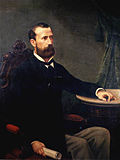 | 1877 | 1880 | Democratic | | Francis T. Nicholls (Democratic) |
| 16 | Samuel D. McEnery |  | 1880 | 1881 | Democratic | | Louis A. Wiltz (Democratic) |
| 17 | William A. Robertson | | 1881 | 1881 | Democratic | | Samuel D. McEnery (Democratic) |
| 18 | George L. Walton | | 1881 | 1882 | Democratic | | Samuel D. McEnery (Democratic) |
| 19 | Clay Knobloch | | 1884 | 1888 | Democratic | | Samuel D. McEnery (Democratic) |
| 20 | James Jeffries | | 1888 | 1892 | Democratic | | Francis T. Nicholls (Democratic) |
| 21 | Charles Parlange |  | 1892 | 1893 | Democratic | | Murphy J. Foster (Democratic) |
| 22 | Hiram R. Lott | | 1893 | 1896 | Democratic | | Murphy J. Foster (Democratic) |
| 23 | Robert H. Snyder | | 1896 | 1900 | Democratic | | Murphy J. Foster (Democratic) |
| 24 | Albert Estopinal |  | 1900 | 1904 | Democratic | | W. W. Heard (Democratic) |
| 25 | Jared Y. Sanders, Sr. | 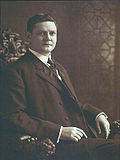 | 1904 | 1908 | Democratic | | Newton C. Blanchard (Democratic) |
| 26 | Paul M. Lambremont | | 1908 | 1911 | Democratic | | Jared Y. Sanders, Sr. (Democratic) |
| 27 | Thomas C. Barret |  | 1912 | 1916 | Democratic | | Luther E. Hall (Democratic) |
| 28 | Fernand Mouton | | 1916 | 1920 | Democratic | | Ruffin G. Pleasant (Democratic) |
| 29 | Hewitt Bouanchaud | | 1920 | 1924 | Democratic | | John M. Parker (Democratic) |
| 30 | Delos R. Johnson | | 1924 | 1924 | Democratic | | John M. Parker (Democratic) |
| 31 | Oramel H. Simpson |  | 1924 | 1926 | Democratic | | Henry L. Fuqua (Democratic) |
| 32 | Philip H. Gilbert | | 1926 | 1928 | Democratic | | Oramel H. Simpson (Democratic) |
| 33 | Paul N. Cyr |  | 1928 | 1931 | Democratic | [20] | Huey P. Long (Democratic) |
| 34 | Alvin Olin King |  | 1931 | 1932 | Democratic | [12] [21] [22] | Huey P. Long (Democratic) |
| 35 | John B. Fournet | | 1932 | 1935 | Democratic | | O. K. Allen (Democratic) |
| 36 | Thomas C. Wingate | | 1935 | 1935 | Democratic | | O. K. Allen (Democratic) |
| 37 | James A. Noe | 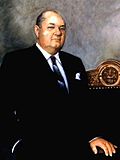 | 1935 | 1936 | Democratic | | O. K. Allen (Democratic) |
| 38 | Earl K. Long | 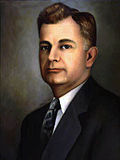 | 1936 | 1939 | Democratic | | Richard W. Leche (Democratic) |
| 39 | Coleman Lindsey | | 1939 | 1940 | Democratic | | Earl K. Long (Democratic) |
| 40 | Marc M. Mouton | | 1940 | 1944 | Democratic | | Sam H. Jones (Democratic) |
| 41 | J. Emile Verret | | 1944 | 1948 | Democratic | | Jimmie H. Davis (Democratic) |
| 42 | William J. Dodd | 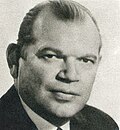 | 1948 | 1952 | Democratic | | Earl K. Long (Democratic) |
| 43 | C. E. Barham | | 1952 | 1956 | Democratic | | Robert F. Kennon (Democratic) |
| 44 | Lether Frazar | | 1956 | 1960 | Democratic | | Earl K. Long (Democratic) |
| 45 | Clarence C. (Taddy) Aycock | | 1960 | 1972 | Democratic | | Jimmie H. Davis (Democratic) 1960-1964 |
| John J. McKeithen (Democratic) 1964-1972 |
| 46 | James E. (Jimmy) Fitzmorris, Jr. | | 1972 | 1980 | Democratic | | Edwin Edwards (Democratic) |
| 47 | Robert Louis Freeman Sr. | | 1980 | 1988 | Democratic | | David C. Treen (Republican) 1980-1984 |
| Edwin Edwards (Democratic) 1984-1988 |
| 48 | Paul Hardy | | 1988 | 1992 | Republican | | Buddy Roemer (Democratic turn Republican) |
| 49 | Melinda Schwegmann | | 1992 | 1996 | Democratic | | Edwin Edwards (Democratic) |
| 50 | Kathleen Babineaux Blanco |  | 1996 | 2004 | Democratic | | Mike Foster (Republican) |
| 51 | Mitchell (Mitch) Landrieu |  | 2004 | 2010 | Democratic | | Kathleen Blanco (Democratic) |
| Bobby Jindal (Republican) |
| 52 | Scott Angelle |  | 2010 | 2010 | Democratic | |
| 2010 | 2010 | Republican | |
| 53 | John L. (Jay) Dardenne |  | 2010 | 2016 | Republican | |
| 54 | Billy Nungesser |  | 2016 | Incumbent | Republican | | John Bel Edwards (Democratic) |
| Jeff Landry (Republican) |


























